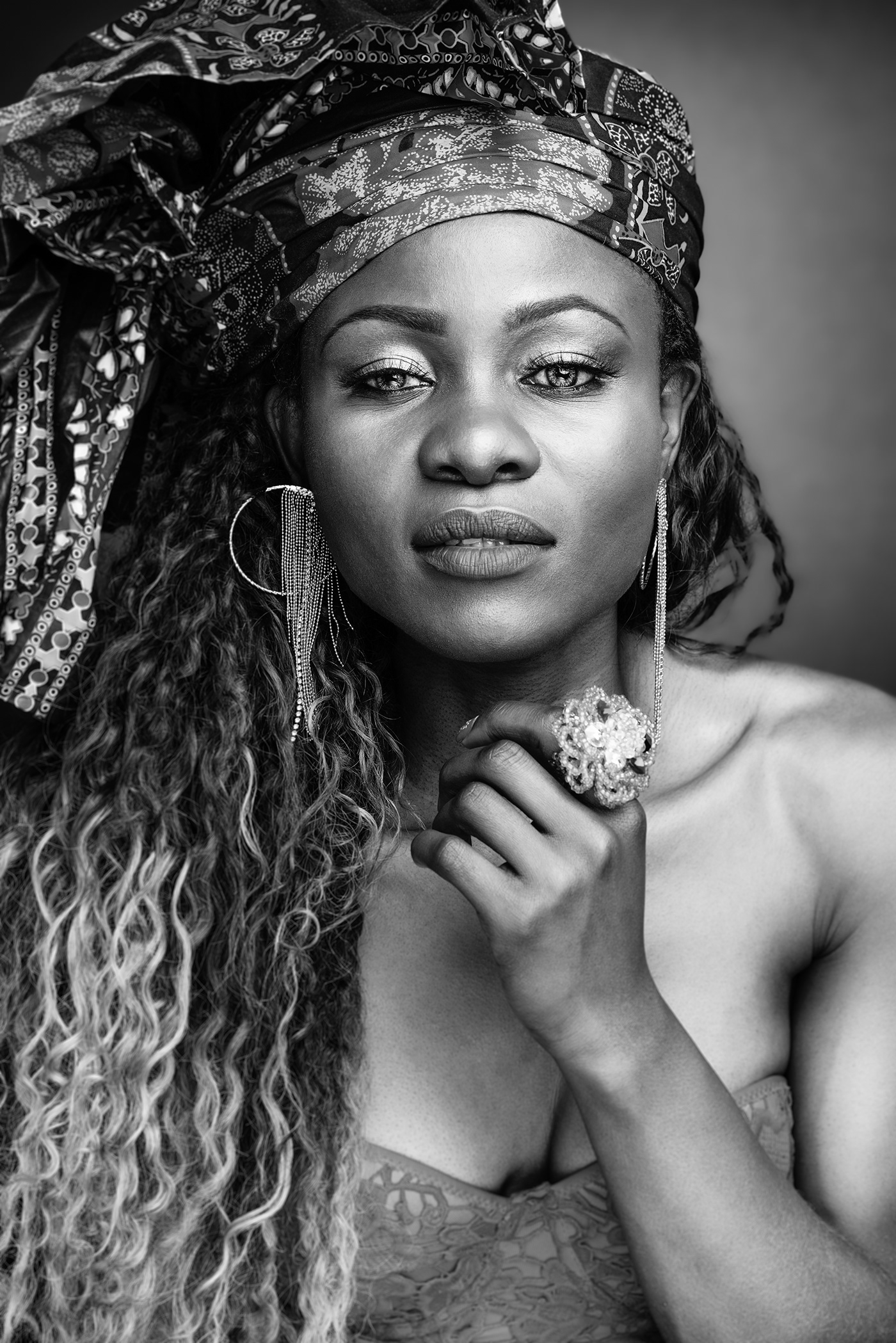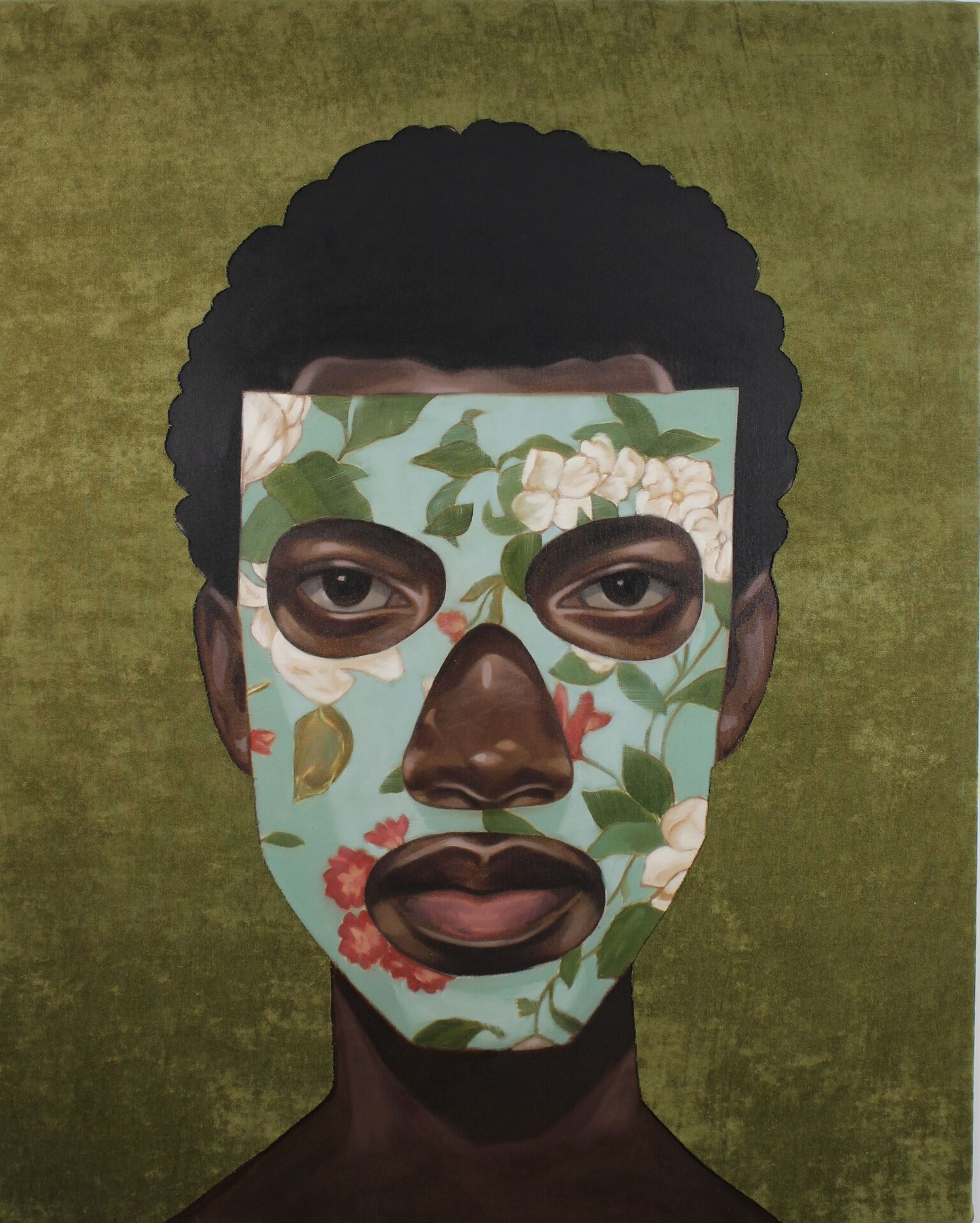

While the Met exhibit intentionally excluded white photographers, The Way She Looks purposefully includes them to highlight the stark differences between nineteenth-century images and ones that came later. The Way She looks exists in conversation with at least two of its predecessors: In and Out of the Studio: Photographic Portraits from West Africa, which ran through January 2016 at the Metropolitan Museum of Art, and the November 2018 show Aunty! African Women in the Frame, 1870 to the Present, held at United Photo Industries Gallery in Brooklyn.

Right: James Gribble II, “Kaffir Woman, South Africa” (1880s), albumen print (courtesy of The Walther Collection and Stevenson, Cape Town and Johannesburg) Gomes & Sons, “Natives Hair Dressing, Zanzibar, Tanzania” (late nineteenth century), collodion printed-out print (courtesy of The Walther Collection and Stevenson, Cape Town and Johannesburg) Dressed in a Victorian era gown with her hair coiffed, she projects a regal, all-knowing aura. Take for example a portrait of a young South African woman by James Gribble II: the photographer lights her face so half is in shadow while half remains bright, yet it’s the look in her eyes that holds your attention.
#Black portraiture how to
With a look in their eyes or a turn of the head these women seem like they have chosen exactly how to display the masks that they know are required of them. While the beginning of the exhibit features images made mostly by white male photographers, the specific images Colard has chosen convey a subtle yet subversive undercurrent of resistance emanating from the sitters. The show traces a journey that starts with the white colonial gaze and progresses through the 1950s studio portraits of West African photographers like Malick Sidibé and Seydou Keita, and more contemporary works from Mimi Cherono Ng’ and Zanele Muholi. Colard spent the last two years assembling the exhibit, bringing together over 100 photographs from the 1870s through the present. “I always felt there was more to say about the place of African women in photography than what I could read or…see,” explained Colard, an expert on contemporary African art at Rutgers University.
#Black portraiture series
Gaspard, Goodman Gallery, Hutchins Center for African & African American Research/Harvard University, New York University’s LaPietra Dialogues, Tisch School of the Arts and the Institute for African American Affairs.Mimi Cherono Ng’ok, “Chebet and Chimu in the Garden” (printed 2018) from the series The Other Country (2008–ongoing), inkjet print © The artist (courtesy of the artist and The Walther Collection)įor the first Toronto exhibition of photographs from the Walther Collection - at Ryerson Image Centre through December 8 - Exhibitions Curator Gaëlle Morel tapped art historian Sandrine Colard to guest curate the show. The conference BLACK PORTRAITURE III: Reinventions: Strains of Histories and Cultureswill be held November 17-19, 2016 at the University of the Witwatersrand (Wits) and held in collaboration with the U.

By 2015, Black Portraitures II: Imaging the Black Body and Restaging Histories was held at NYU’s La Pietra in Florence, and after overwhelming demand, it was brought to New York earlier this year for Black Portraitures: Revisited. In 2013, Black Portraitures: The Black Body in the West was presented in Paris. Presenters will engage a range of topics such as Biennales, the Africa Perspective in the Armory Show, the global art market, politics, tourism, sites of memory, Afrofuturism, fashion, dance, music, film, art, and photography. It offers a forum that gives artists, activists, and scholars from around the world an opportunity to share ideas from historical topics to current research on the 40 th anniversary of Soweto. BLACK PORTRAITURE III: Reinventions: Strains of Histories and Cultures is the seventh conference in a series of conversations about imaging the black body.


 0 kommentar(er)
0 kommentar(er)
